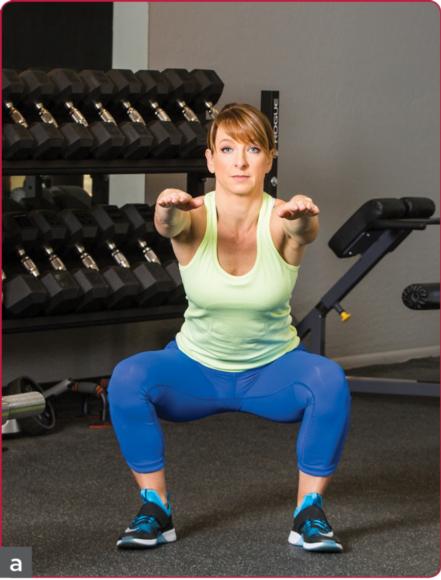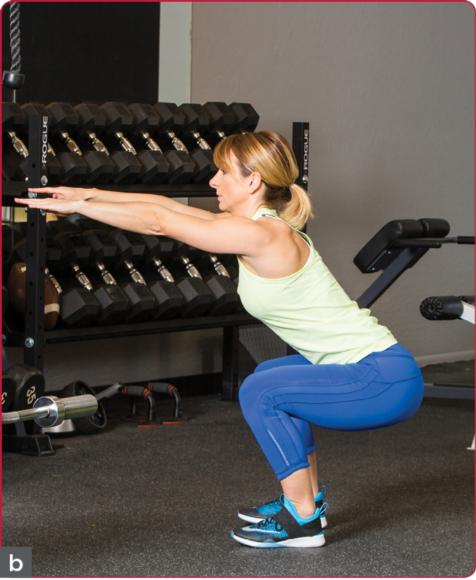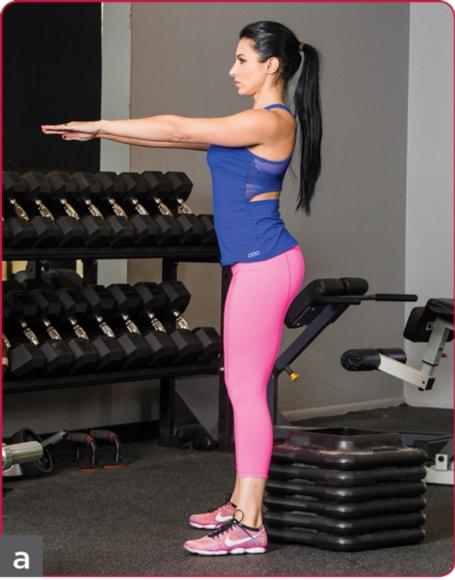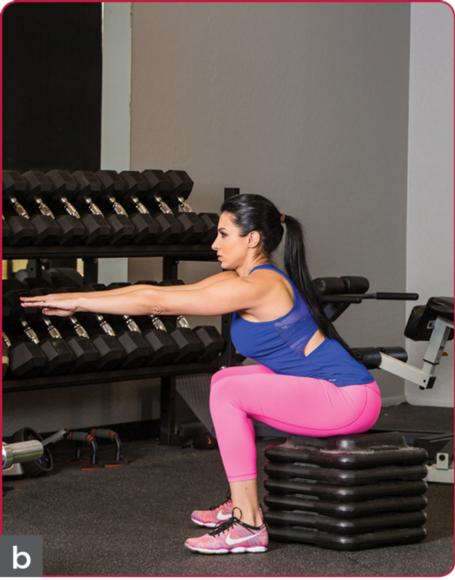Learn basic squat form and variations
This is an excerpt from Eat. Lift. Thrive. by Sohee Lee.
The squat is a knee-dominant movement that involves deep flexion in the knees and hips. Exercises that fit in this category work the quadriceps and erector spinae to a high degree. Contrary to popular belief, however, squats are not necessarily the best for building the glutes.
The most popular lower-body exercises fall into this category, such as the back squat, goblet squat, and Bulgarian split squat.
In figure 8.1, note how the squat looks from the front and from the side. Note how the knees are shoved out, the chest stays up, and the back stays in a neutral position. These basic cues go along with all squat pattern movements.
 |
 |
Squat: (a) front view; (b) side view.
Many people mistakenly believe that they're simply not cut out to be good squatters. After practicing the movement pattern with good form, however, they realize that this is not the case.
Beginners should start with the box squat and progress from there. When you can perform 20 bodyweight repetitions of the box squat with quality form, you're ready to add load and progress to other squat variations, such as the goblet squat and front squat.
Bodyweight Box Squat
 |
 |
Bodyweight box squat: (a) starting position; (b) squat.
Muscles
- Primary: quadriceps, gluteals, erector spinae
- Secondary: hamstrings, adductors
Movement
- Stand in front of a box squat box, plyo box, or weight bench 11 to 16 inches (28 to 41 cm) tall. Stand close to the box or straddle it slightly.
- Position your feet slightly wider than shoulder-width apart and flare your feet out 30 to 45 degrees.
- Sit back and lower yourself onto the box in a controlled manner while keeping your shins vertical and knees pushed out.
- When you reach a seated position, pause briefly while keeping your low back arched.
- Reverse the motion by pushing through your heels. Squeeze the glutes to lockout.
Tips
- This movement is not how you will normally squat. It's a drill to teach you to use your hips more.
- The ideal foot stance will vary from one person to the next. Tinker with your foot position and find what feels best for you and allows you to perform the movement with proper form.
- Take your time sitting back onto the box and be careful not to plop. You should feel a good stretch in your hamstrings.
- Imagine that someone is standing behind you with a rope around your hips and pulling back.
- With deep box squats, in which the hip joint is lower than the knee joint, you won't be able to keep your shins vertical; the knees must come forward a little bit to achieve depth. This is not the case with parallel box squats, however, in which the hip joint is in line with the knee joint.
Variation 1: Dumbbell Goblet Box Squat
Hold a dumbbell vertically, resting it on your palms and pressing it up against your chest as you perform the box squat.
Variation 2: Barbell Box Squat
Brace a barbell against your upper back as you perform the box squat.
Learn more about Eat. Lift. Thrive.
More Excerpts From Eat. Lift. Thrive.SHOP

Get the latest insights with regular newsletters, plus periodic product information and special insider offers.
JOIN NOW


